Abstract
The present study was carried out in the Southern Afar region in Ethiopia to assess the vulnerability of pastoral communities to climate change and variability. A household questionnaire survey was employed to collect data at a household level. A total of 250 pastoral households were sampled using stratified random sampling. The results revealed that 28.8% of the pastoral households were highly vulnerable. Most of the households (53.6%) were moderately vulnerable. Only 17.6% of the households were capable of coping even though there would be a high probability of moving from less vulnerable to a moderate or high vulnerability level in the future if no appropriate adaptive measures would be taken by decision-makers. Policies with emphasis on empowerment of women, such as improving their access to and control over resources through a better institutional set-up; improving irrigation facilities and skills; expanding the participation of pastoral households on irrigation farming; creating opportunities for non-farm income; and improving access to credits, markets, health and veterinary services, are expected to enhance pastoralists’ resilience.
Keywords: climate; irrigation; livestock; pastoralists; vulnerability.
Introduction
In pastoral communities of Ethiopia, climate-induced shocks and stresses, such as droughts, rising temperature and irregular rainfall, reduced the extent of pastoral areas and negatively impacted water availability and led to animal deaths owing to hunger and diseases (Conway 2000). The weather-related natural disasters frequently occurred in pastoral areas of Ethiopia, which has been further exacerbated by the depletion of the natural resources and destruction of ecosystems because of anthropogenic activities such as deforestation and allocation of grazing areas to commercial farms (Tadege 2007). Ethiopia is particularly very susceptible to drought, which is the most significant climate-change-related disaster influencing the country over time (Seleshi & Zanke 2004). Rainfall anomalies and the delayed onset of the rainy season, along with rising temperatures, lead to impoverishment of grassland, lack of livestock feed and water as well as heat stress to livestock. This has, in turn, increased the mortality rate of herds, susceptibility of livestock to disease and emaciation as a result of the long distances they travel in search of pasture and water (Muluneh & Demeke 2011). Droughts, floods and heat waves have increased in Ethiopia over the past decades. Drought will affect all nations, but the impact will be higher on low-income countries, such as Ethiopia, which have limited capacity to cope with the effects of the same (Funk et al. 2008; Seleshi &Zanke 2004; Williams & Funk 2011). Drought continues to be a major challenge for the Ethiopian people (United Nations 2008), and in the 21st century, there has been an increasing frequency of extreme droughts because of global warming in Ethiopia (Institute of Development Studies 2008). The country has confronted severe droughts at least twice per decade for the last five to seven decades, with the most serious ones in 1972–1973, 1984 and 2002–2003 (Mideksa 2010, Tadege 2007). Besides, flood is also a climate-related disaster that happens in Ethiopia from time to time. In 2006, flood caused significant loss of property and human life in many regions of Ethiopia (Tadege 2007). Moreover, regional projections of climate models predicted a rising frequency of extreme flooding because of global warming in Ethiopia (Institute of Development Studies 2008). Over the past 55 years, there has been a warming trend also in Ethiopia. According to Tadege (2007), the temperature has been increasing by about 0.37 °C every 10 years. This increase in temperature consequently gives several impacts and effects such as heat stress to livestock, and high evapotranspiration.
It has been observed that although climate change is a world-wide phenomenon, its influence and extent differ across multiple levels and scales. Its impacts are not the same at district, regional, national and global levels. Although changes in climate and climate extremes will be the greatest challenge for people in Ethiopia, few studies have been undertaken in the country on vulnerability to climate change. Most of this literature has only investigated poverty and food insecurity (Dercon & Krishnan 2000). Deressa, Hassan & Ringler. (2008) assessed the vulnerability of households to climate-induced shocks and stresses at the national level in Ethiopia. However, insights into vulnerability to climate perpetuation vary with the scale of analysis. Vulnerability to climate-induced shocks and stresses assessed at the national level can conceal variations in vulnerability of households at the local level (Parkins & MacKendrick 2007). Accordingly, this national-level (macro-scale) assessment by Deressa et al. (2008) could have overlooked variations in vulnerability at the local level because the vulnerability level may vary even among households at the district level. Households at the district level can vary in terms of the level of food insecurity, coping and adaptation capacity, access to credits, public services, safety nets and natural resources. In such conditions, variability at the local level is usually ignored in nationwide vulnerability studies. Therefore, it is difficult to precisely understand the spatial aspects of households’ vulnerability from nationwide vulnerability assessments. This shows the significance of scale in vulnerability studies and ensures the necessity of vulnerability study at the micro level. It is on the basis of these premises that the present study needs to understand the vulnerability of pastoralists to climate change and variability in the Southern Afar region of Ethiopia.
Methodology
Study areas
The Afar region is situated in the northeastern part of Ethiopia and comprises about 270 000 km2 (CSA 2008) between 39°34’E and 42°28’E and 8°49’n and 14°30’N. The study was conducted in the Southern Afar region in Amibara and Gewane districts (see Figure 1). Agro-ecologically, the climate of Amibara is generally semi-arid with a temperature level that falls between 25 °C and 35 °C and an average annual rainfall below 600 mm. The altitude of Amibara ranges from 720 m.a.s.l. to 1100 m.a.s.l. The altitude of Gewane ranges from 550 m.a.s.l. to 650 m.a.s.l. and its temperature falls between 28 °C and 42 °C, with an average annual rainfall below 500 mm (CSA 2008).
Research design
A stratified random sampling approach was adopted to sample villages and households. Stratification was based on livelihood activities practiced by households in the two districts, Amibara and Gewane. Firstly, villages were identified and stratified into pastoralists (those households are solely dependent on livestock production) and agro-pastoralists (those households are dependent on both livestock and crop production). Accordingly, from the Amibara district comprising 10 pastoralist and five agro-pastoralist villages, three villages consisting of two pastoralist villages (Andido and Bure) and one agro-pastoralist village (Melka-Worer) were randomly selected using the lottery system. Similarly, from the Gewane district, which involves six agro-pastoralist and two pastoralist villages, three villages consisting of two agro-pastoralist villages (Yigle and Urafita) and one pastoralist village (Arogew Gewane) were randomly selected. Overall, six villages were sampled from the two districts.
After random selection of the study villages, the total number of households was obtained from the district pastoral and agricultural development officer. A formula by Krejcie and Morgan (1970) was followed to determine the sample size in each of the villages sampled. For the selected households whose heads were absent, the next household was chosen and interviewed; a total of 250 households were interviewed from Amibara and Gewane districts.
An open- and closed-ended questionnaire was administered face to face with the heads of the households within six villages of the Amibara and Gewane districts from December 2016 to February 2016. The collected data were coded and thereafter analysed using Statistical Packages for the Social Sciences (SPSS) (version 20). To complement the household questionnaire data, 29 individuals from sampled villages and various organisations were interviewed as key informants. Four focus group discussions were selected separately with gender equality (six men and six women) from the sampled villages.
Data collection
A pilot test run was undertaken with local enumerators and key informants before the beginning of the household interviews, and the final questionnaires were revised and rewritten accordingly. The questionnaire used for the pre-test was excluded from the final data entry and analysis. The piloting was carried out to check the suitability of the tools and also whether the field assistants could manage the questionnaire without difficulty.
Information on various aspects was collected through interviewing of the selected household head. The survey addressed information about household characteristics, household access to basic services, livelihood assets and their trends, income per household, sources of income, climate change information, climate impacts, adaptation and coping strategies, farm labour, social networks and remittances. To avoid misunderstanding, the household interviews were undertaken in the local language by the local field assistants.
Assessing vulnerability of pastoralists to climate variability and change
This study used vulnerability indicators to assess vulnerability of pastoralists to climate shocks and stresses. The method for selection of vulnerability indicators is discussed as follows: Vulnerability to perturbation involves different dimensions and is influenced by interrelated multiple components. Most indicators of vulnerability are latent variables, and hence, difficult to measure. However, based on vulnerability indices, the vulnerability levels of households can be assessed. To develop indices, the appropriate indicators of social, economic and environmental vulnerability must first be selected before weights can be assigned for each indicator. Lastly, these indicators are combined to develop an index. Indices are valuable to represent a complex reality in simpler terms. However, the approach employed to select indicators is very significant, as the selection of non-representative indicators can result in the development of the wrong index of vulnerability. Theory-driven and data-driven are the two approaches in the choice of indicators (Vincent 2004). The choice of appropriate indicators can be carried out depending on certain theories that offer understanding of the determinants of vulnerability. Nevertheless, even theory-based methods are influenced by data restrictions and subjectivity is mostly a problem during the selection of indicators. The appropriate alternative is to validate the representativeness of the theory-based indicators based on focus group discussions with key informants. The present study employed this approach while choosing the indicators to determine vulnerability of households in the study area.
Having selected the appropriate vulnerability indicators, the values of the vulnerability indicators were normalised to make the indicator’s value within a similar range (Gbetibouo, Ringler & Hassan 2010; Nelson et al. 2010; Vincent 2004). Normalisation is performed by subtracting the mean from the observed value and dividing by the standard deviation for each indicator.
The next step was to assign weights to the selected vulnerability indicators. In this study, the principal component analysis (PCA) was employed to assign weights to the indicators (Filmer & Pritchett 2001). The normalised variables were then multiplied by the weights of the corresponding indicators, using the following formula:
where:
I = the index value
b = the weights from PCA
a = the individual value of the indicator
x = the mean value of the indicator
s = the standard deviation of the indicators.
Lastly, the vulnerability index of each household was calculated using the following equation (following IPCC 2012):
where:
V = the vulnerability index of each household
AC = the adaptive capacity index
E = the exposure index
S = the sensitivity index for the corresponding household.
The model specification is further described as follows:
where:
Vi = the vulnerability index
Xs = elements of adaptive capacity
Ys = elements of sensitivity and exposure
As = the factor score of each variable computed using PCA.
The values of X and Y are obtained by normalisation using their mean and standard errors (see Eqn 4). This study used an integrated approach, which combined social, economic and environmental indicators to construct vulnerability indices for each household as suggested by Madu (2012) and employed by Tesso, Emana and Ketema (2012) in Ethiopia. The vulnerability index was suggested after the definition given by the IPCC (2012) that vulnerability is considered as a function of adaptive capacity, sensitivity and exposure of the system.
When the sensitivity and exposure of the households are lower than that of its adaptive capacity, the household becomes less vulnerable to climate-induced hazards and vice-versa. The assessment of the socio-economic vulnerability approach gives emphasis to the socio-economic and political conditions of the local people. Vulnerability levels among people in a given area can differ according to their level of knowledge and skills, income level, welfare, access to affordable credits and inputs such as improved varieties, access to early warning information, social capital and political ability (Füssel 2007). The biophysical approach measures the degree of harm because of climate perturbations and stresses on the systems (Jones et al. 2004). The biophysical, or impact assessment, approach is mostly focused on the physical influence of change in climate on various features of the system.
Results and discussions
Descriptive statistics
The results indicated that the average size of the family in the study area consists of about eight people. This was relatively higher than the national average rural household size. Such large family size in the region might be associated with the polygamy culture that is commonly practiced in the Afar region. The average age of household heads was 52.7 years and most of them were men (58.8%). The majority of respondents (72.2%) were found to be illiterate, which means that only 28.8% of the respondents could read and write, with a formal education ranging from 1 to 10 years. Furthermore, the results revealed that only 28.8% of the households had access to extension services, which suggests that access to extension services in the Southern Afar region was very poor.
On the other hand, access to basic services in the Southern Afar region was generally poor. For example, only 22.2% of the households had access to markets near their villages. The majority of the households (77.8%) usually travel long distances to sell their cattle and camels. According to the respondents, on average, they travel for more than 12 h across other adjacent districts or regions (Amhara and Oromia) to get to the market for selling large animals (cattle and camels), which is costly in terms of time and labour. During such long-distance travelling, pastoralists sometimes lose their livestock because of stresses associated with long travelling, feed and water scarcity and motor vehicle accidents. The animals that finally make it to the market would have lost weight, which in turn has an adverse effect on the selling price. Sheep and goats are sold in a nearby small village market but because of a lack of bargaining power and not enough purchasers, they cannot sell their livestock for a reasonable price. The results further showed that only 30% of the households had access to veterinary clinics and services and 32% of households had access to the health centre and health services.
The results further indicated that households’ access to credit was very poor in the study area. Only 14.8% of households had access to credit. Furthermore, 90% of the households received market information about the price prior to selling through an informal local information exchange system (locally called Dagu). Only 2% of the households received formal market information through district extension officers and the radio. Therefore, there is a need to provide affordable credit access and market information in order to enhance the resilience of pastoralists towards climate-induced shocks and stresses.
Hazards perceived by local people
According to the local respondents, the rainfall of late has become more unpredictable and erratic, this rainfall variability turns into frequent and prolonged droughts. The findings indicated that drought was the most frequent hazard in the study areas as reported all the respondents (n = 250), followed by the encroachment of the rangeland by invasive species, mostly Prosopis juliflora, livestock diseases, loss of dry season grazing areas and floods (see Table 1).
| TABLE 1: Hazards perceived by sample households (multiple responses were possible). |
The results showed that cattle diseases such as blackleg, locally referred to as harayti, and trypanosomiasis, locally called sole, and diseases of camels such as geramole and gosso were some of the frequent hazards threatening their cattle and camels. Contagious caprine pleuro-pneumonia, a fatal disease that mainly affects goats, and mange, a skin disease caused by parasitic mites, were also the most common diseases affecting sheep and goats in the study areas. Respondents further complained that allocation of the dry season grazing areas for commercial farmers was also another hazard curtailing livestock mobility during dry seasons, increasing vulnerability of pastoralists to climate change and variability.
Vulnerability indicators
The socio-economic and biophysical vulnerability indicators selected for this study are indicated in Table 2. The results showed that 76.8% of the households had more than five family members, with 32% respondents reporting that they had more than three dependents, aged less than 15 years and 65+ years. Pastoralism is a livelihood strategy requiring more labour availability. Thus, those households with more dependents, aged less than 15 years and 65+ years, were more vulnerable to climate-related hazards. The findings further showed that 72.2% of the households were illiterate. This, in turn, decreases households’ capability to access markets, climate and early warning information, making households more vulnerable to climate-induced shocks and stresses.
| TABLE 2: Selected vulnerability indicators and their effects on vulnerability. |
As shown in Table 2, more than 41% of the household heads were women who were more vulnerable to climate-induced shock and stresses as they had low access to assets, credits, social participation and climate information. On the other hand, 72.2% of the households had no access to extension services, indicating their vulnerability to climate-induced shocks such as droughts. The results imply that the education level of the head of the household, and access to extension services and climate information were the most important social vulnerability variables in the study area. The findings further indicated that approximately 60% of the households had no multiple livelihood opportunities and most of them were dependent on livestock production for their incomes (see Table 2). Forty per cent of the households practiced irrigation crop farming alongside livestock keeping. The results also revealed that 77.8% and 70% of the households complained that they had to travel more than 10 km to access markets and veterinary services, respectively.
Moreover, the findings showed that about 57.6% of the households practiced livestock mobility as a coping strategy against drought in the study area (see Table 2). In addition, 85.2% of the respondents noted that they had no credit services in the study area. The results further revealed exposure to climate shocks and stresses (see Table 2). Ninety-eight per cent of the respondents indicated that they experienced decreasing rainfall, while 95% of the households experienced increasing temperature for the last three decades. Furthermore, all households experienced increasing frequency of droughts, while 42% of the households faced flood hazards two or more times in the last 10 years.
Measuring vulnerability of households
In the present study, PCA was conducted to develop the vulnerability indices and measure the vulnerability of households quantitatively. Twenty-seven indicators of household vulnerability were studied and their factor scores are indicated in Table 4. The appropriateness of the data was assessed depending on the Kaiser-Meyer-Olkin (KMO) and Bartlett’s tests values before running the factor analysis. According to Li and Weng (2007), if the KMO value is greater than 0.5 and the Bartlett’s test value is less than 0.1, the factor analysis can be run. It is observed that the KMO measure of sampling adequacy was 0.728, indicating that the model was fairly acceptable (Table 3).
| TABLE 3: Kaiser–Meyer–Olkin and Bartlett’s test. |
Having checked the appropriateness of the data for PCA analysis, PCA analysis was carried out on the vulnerability indicators listed in Table 4. The results of PCA revealed that three components were extracted with eigenvalues greater than 1 explaining 77.36% of the total variation. It is observed that 52.33%, 14.29% and 10.74% of the variation were explained by the first, second and third principle components, respectively. The factor scores and their relationship with the vulnerability indicators are indicated in Table 4. The household’s vulnerability index was developed using Equation 4, explained in the section titled ‘Assessing vulnerability of pastoralists to climate variability and change’. Based on the developed vulnerability index, households were grouped into three vulnerability levels. Those households having a vulnerability index of 3.0–5.9 were grouped as less vulnerable and accounted for 17.6% of the households (see Table 5). Less vulnerable households are in a vulnerable state, but can still cope. Similarly, households grouped as moderately vulnerable are those that need immediate, but short-term, support during climate-induced shock and had a vulnerability index of -2.5 to +2.9 and constituted 53.6% of the sampled households. The third vulnerability group comprised highly vulnerable households having a vulnerability index of -2.51 to -4.49. Highly vulnerable households are those that are at the emergency level, and they accounted for 28.8% of the sampled households (see Table 5).
| TABLE 4: Factor loadings of vulnerability indicators from principal component analysis. |
| TABLE 5: Vulnerability levels and situations of pastoral households. |
Furthermore, this study compared vulnerability of households by livelihood groups, districts and gender of the household head. Accordingly, the findings indicated that households living in the Gewane district were relatively less vulnerable than households living in the Amibara district, although significant difference was not observed between the vulnerability indexes of the two districts (see Table 6 & Figure 2). This can be explained by differences in exposure to climate shocks and stresses between the two districts. The local people’s reports during the field survey indicated that, recently, the Amibara district was more drought-prone than the Gewane district.
 |
FIGURE 2: Vulnerability levels of households by district. |
|
| TABLE 6: Paired sample tests for household vulnerability index clustered by livelihood strategy, districts and gender of the household head. |
The results further indicated that agro-pastoral households were significantly less vulnerable than pastoral households (see Table 6 & Figure 3). This can be related to variations between the two groups with regard to livelihood diversification. Agro-pastoral households were practicing irrigation farming alongside livestock keeping, while pastoralists were solely dependent on their livestock as a source of income. Hence, agro-pastoral households had better adaptive capacity and were less vulnerable than pastoral households. This implies that pastoralism is becoming a risky enterprise in the Southern Afar region in a changing climate. Similar results were reported by O’Brien et al. (2004) who indicated that those households practicing irrigation farming were more adaptable to climate change and variability.
 |
FIGURE 3: Vulnerability categories of households by livelihood strategy. |
|
The results further indicated that female-headed households were more vulnerable than male-headed households (see Table 6 & Figure 4). This was because of low adaptive capacity of women as a result of poor access to social participation, credits and assets, and their inability to combine crop farming with livestock production because of limited labour availability and low skills with regard to crop farming activities as compared to men. The results of this study are supported by Ongoro and Ogara (2012) who did their studies on the vulnerability of Samburu pastoralists in Kenya and indicated that women were more vulnerable to the impacts of climate change than their male counterparts.
 |
FIGURE 4: Vulnerability of households by gender. HHs, households. |
|
Conclusion and recommendation
Understanding the vulnerability of households to climate change and variability is indispensable for decision-makers to device adaptation strategies for long-term resilience of pastoral households. This study identified which category of livelihood groups, district and gender was more vulnerable, as this would enable decision-makers to prioritise the group of households, livelihood groups and district with regard to development intervention. Accordingly, the results revealed that 28.8% of the pastoral households were highly vulnerable. These groups of households would need intensive care and follow-up to disengage them from this situation. Most of the households (53.6%) were moderately vulnerable, suggesting that in the case of climate-induced shock, they would need some support to recover. Only 17.6% of the households were capable of coping in spite of a high probability of moving from a less vulnerable to a moderate or high vulnerability level in the future, if no appropriate adaptive measures would be taken by the decision-makers.
This study concluded that those households who practiced irrigation farming were less vulnerable than those households solely dependent on livestock production. Therefore, the Ethiopian Ministry of Federal and Pastoralist Development Affairs should enhance households’ capacity in terms of finance through provision of affordable credit access, and provide training to enhance their technical skills on crop farming. To enhance the contribution of irrigation crop farming for increasing household resilience, households should be provided with improved agricultural technologies such as a water pump for irrigation, and improved seed varieties with short growing periods and resistance to diseases. In the Southern Afar region, it was identified that lack of access to nearby markets increases vulnerability of pastoral households to climate change and variability. Therefore, interventions should be introduced to improve access to markets if pastoralists need to be resilient. Pastoralists can get the best value for their products and become more resilient if the Ministry of Federal and Pastoralist Development Affairs improves market access and develops marketing opportunities for pastoral households through establishment of the nearby market centres, road access and provision of water access along stock routes. The present study also showed that lack of access to formal early warning information increases the vulnerability of pastoralists. Therefore, early warning and early response (interventions) should be regarded as a matter of great concern by the Ministry of Federal and Pastoralist Development Affairs and should be included in the pastoral development policy for enhancing resilience of pastoralists to climate-related disasters. Furthermore, policies with emphasis on women empowerment, such as improving their access to and control over resources through a better institutional set-up, creating opportunities for non-farm income are expected to enhance pastoralists’ resilience.
Acknowledgements
The African Forest Forum (AFF) and the National Research Foundation of South Africa (NRF) are thanked for their funding of the research.
Competing interests
The authors declare that they have no financial or personal relationships that may have inappropriately influenced them in writing this article.
Authors’ contributions
M.F. as responsible for conceptual contribution, data collection and analysis and writing of the manuscript. A.J. and Y.M. gave technical comments on the manuscript.
Funding information
Funding for this research was provided by the African Forest Forum (AFF) and the National Research Foundation (NRF) of South Africa.
References
Conway, D., 2000, ‘Some aspects of climate variability in the north east Ethiopian Highlands-Wollo and Tigray’, Sinet: Ethiopian Journal of Science 23(2), 139–161. https://doi.org/10.4314/sinet.v23i2.18163
Central Statistical Authority (CSA), 2008, Summary and statistical report of the 2007, Population and Housing Census of Ethiopia, Addis Ababa, Ethiopia.
Dercon, S. & Krishnan, P., 2000, ‘Vulnerability, seasonality and poverty in Ethiopia’, The Journal of Development Studies 36(6), 25–53. https://doi.org/10.1080/00220380008422653
Deressa, T., Hassan, R.M. & Ringler, C., 2008, Measuring Ethiopian farmers’ vulnerability to climate change across regional states, IFPRI Discussion Paper 00806, International Food Policy Research Institute, Addis Ababa, Ethiopia.
Filmer, D. & Pritchett, L.H., 2001, ‘Estimating wealth effects without expenditure data—or tears: An application to educational enrollments in states of India’, Demography 38(1), 115–132.
Funk, C., Dettinger, M.D., Michaelsen, J.C., Verdin, J.P., Brown, M.E., Barlow, M. et al., 2008, ‘Warming of the Indian Ocean threatens eastern and southern African food security but could be mitigated by agricultural development’, Proceedings of the National Academy of Sciences 105(32), 11081–11086. https://doi.org/10.1073/pnas.0708196105
Füssel, H.M., 2007, ‘Vulnerability: A generally applicable conceptual framework for climate change research’, Global Environmental Change 17(2), 155–167. https://doi.org/10.1016/j.gloenvcha.2006.05.002
Gbetibouo, G.A., Ringler, C. & Hassan, R., 2010, ‘Vulnerability of the South African farming sector to climate change and variability: An indicator approach’, Natural Resources Forum 34(3), 175–187. https://doi.org/10.1111/j.1477-8947.2010.01302.x
Institute of Development Studies, 2008, Economic impacts of climate change in Ethiopia, viewed 10 February 2018, from http://www.ids.ac.uk/go/idsproject/economic-impacts-of-climate-change-in-ethiopia
Intergovernmental Panel in Climate Change (IPCC), 2012, Managing the risks of extreme events and disasters to advance climate change adaptation. Special report of the intergovernmental panel on climate change, C.B. Field, V. Barros, T.F. Stocker, D. Qin, D.J. Dokken, K. Ebi, et al. (eds.), Cambridge University Press, Cambridge.
Jones, R., Boer, R., Magezi, S. & Mearns, L., 2004, ‘Assessing current climate risks’, in I. Burton, E. Malone & S. Huq (authors) and I. Lim & E. Spanger-Siegfried (eds.), Adaptation policy frameworks for climate change: Developing strategies, policies and measures, pp. 91–117, Cambridge University Press, Cambridge.
Krejcie, R.V. & Morgan, D.W., 1970, ‘Determining sample size for research activities’, Educational and Psychological Measurement 30, 607–610. https://doi.org/10.1177/001316447003000308
Li, G. & Weng, Q., 2007, ‘Measuring the quality of life in city of Indianapolis by integration of remote sensing and census data’, International Journal of Remote Sensing 28(2), 249–267. https://doi.org/10.1080/01431160600735624
Madu, I.A., 2012, Spatial vulnerability of rural households to climate change in Nigeria: Implication for internal security, Working paper No. 2, The Robert S. Strauss Center for International Security and Law, viewed from https://www.files.ethz.ch/isn/152916/working%20paper%20no%202_final.pdf
Mideksa, T.K., 2010, ‘Economic and distributional impacts of climate change: The case of Ethiopia’, Global Environmental Change 20(2), 278–286.
Muluneh, W. & Demeke, H., 2011, ‘Climate change and variability, its impact on rural livelihoods, local coping and adaptation strategies in Woreilu Woreda, North Eastern Ethiopia’, Ethiopian Journal of Development Research 32(2).
Nelson, R., Kokic, P., Crimp, S., Martin, P., Meinke, H., Howden, S.M. et al., 2010, ‘The vulnerability of Australian rural communities to climate variability and change: Part II – Integrating impacts with adaptive capacity’, Environmental Science & Policy 13(1), 18–27. https://doi.org/10.1016/j.envsci.2009.09.007
O’Brien, K., Leichenko, R., Kelkar, U., Venema, H., Aandahl, G., Tompkins, H. et al., 2004, ‘Mapping vulnerability to multiple stressors: Climate change and globalisation in India’, Global Environmental Change 14(4), 303–313. https://doi.org/10.1016/j.gloenvcha.2004.01.001
Ongoro, E.B. & Ogara, W., 2012, ‘Impact of climate change and gender roles in community adaptation: A case study of pastoralists in Samburu East District, Kenya’, International Journal of Biodiversity and Conservation 42(2), 78–79.
Parkins, J.R. & MacKendrick, N.A., 2007, ‘Assessing community vulnerability: A study of the mountain pine beetle outbreak in British Columbia, Canada’, Global Environmental Change 17(3), 460–471. https://doi.org/10.1016/j.gloenvcha.2007.01.003
Seleshi, Y. & Zanke, U., 2004, ‘Recent changes in rainfall and rainy days in Ethiopia’, International Journal of Climatology 24(8), 973–983. https://doi.org/10.1002/joc.1052
Tadege, A. (ed.), 2007, Climate change national adaptation program of action (NAPA) of Ethiopia, Federal Democratic Republic of Ethiopia, Ministry of Water Resources, National Meteorological Agency, Addis Ababa.
Tesso, G., Emana, B. & Ketema, M., 2012, ‘Analysis of vulnerability and resilience to climate change induced shocks in North Shewa, Ethiopia’, Agricultural Sciences 3(06), 871. https://doi.org/10.4236/as.2012.36106
United Nations, 2008, Situation report: Drought/food crisis in Ethiopia 27th June 2008, viewed 10 February 2018, from http://www.ochaeth.org/Reports/downloadable/Sit.Rep.DroughtFoodCrisisinEthiopia27June2008.pdf
Vincent, K., 2004, Creating an index of social vulnerability to climate change for Africa, Working Paper 56, Tyndall Centre for Climate Change Research, University of East Anglia, Norwich, viewed 05 February 2015, from https://www.researchgate.net/profile/Katharine_Vincent/publication/228809913_Creating_an_Index_of_Social_Vulnerability_to_Climate_Change_in_Africa/links/546478a50cf2c0c6aec52194/Creating-an-Index-of-Social-Vulnerability-to-Climate-Change-in-Africa.pdf
Williams, A.P. & Funk, C., 2011, ‘A westward extension of the warm pool leads to a westward extension of the Walker circulation, drying eastern Africa’, Climate Dynamics 37(11–12), 2417–2435. https://doi.org/10.1007/s00382-010-0984-y
|



